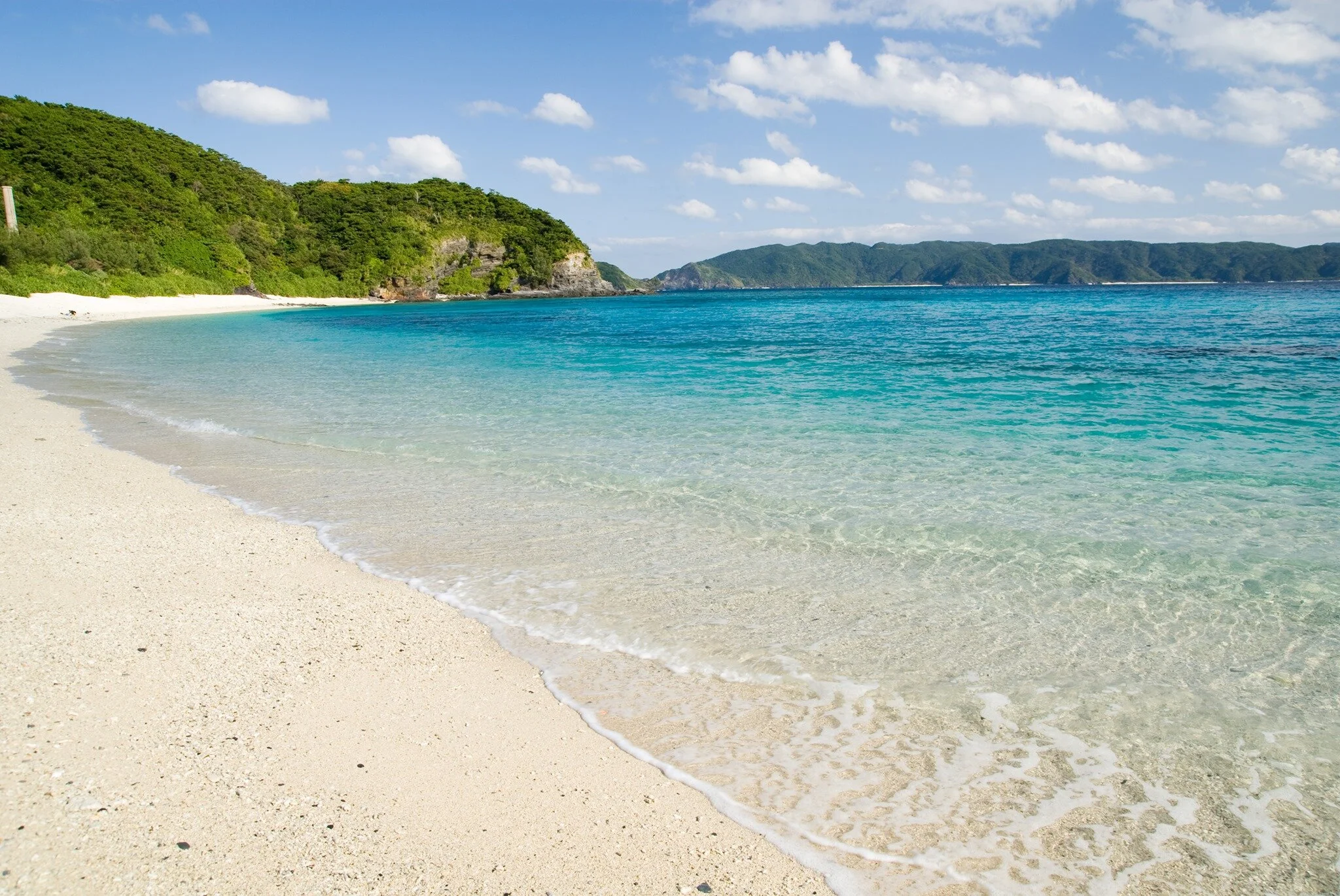Okinawa
Okinawa Prefecture is an archipelago extending for more than 1100 kilometers from the Kagoshima Prefecture to Taiwan. Out of many of its islands, more than 60 are inhabited. Its administrative center is the city of Naha, placed on the main island. Okinawa is the only Japanese sub-tropical territory and as such its flora and fauna differs greatly from the endemic species of Japan.
The autochthonous population of the islands is closely related to the Austronesian people, who occupy the Pacific regions from Taiwan to Polynesia. This means that culturally and spiritually they might have more in common with such tribes rather than the Japanese. Additionally, their activities have also been heavily influenced by the Chinese culture.
The Okinawan are now fully recognized Japanese citizens, but to some degree they still preserve the languages and traditions of the times before the Japanese acculturation. In 2008 the UNESCO labeled the languages of the archipelago as “endangered” and put pressure on the Japanese government to protect them, which enhanced the recognition of Okinawa’s indigenous identity. Nowadays Okinawan languages and traditions are taught to children at school.
Furuzamami beach, Zamami Island, Okinawa.
Travel to Okinawa
Thanks to its tropical landscapes Okinawa is a popular tourist site, often chosen as a marriage and honeymoon destination. In 2018 it has even topped the famous Hawaii in terms of the number of visitors! Tourists traveling to Okinawa usually wander about the many islands and enjoy the white sand beaches. What many of them do not know is that among the heavenly nature lives one of the only three poisonous snakes of Japan, the habu. The Okinawans, though, are so used to sharing their lives with the snakes that they started using them as a special ingredient to spice up their liquor. Habushu, the snake sake, is one of the most typical Okinawan souvenirs.
Hiji Otaki, Okinawa.
Okinawa in the Past
The history of Okinawa has its share of upsetting moments. Before becoming a Japanese prefecture, it was known as the semi-independent Ryukyu Kingdom. For many centuries, the Ryukyu Kingdom balanced its allegiances with Chinese dynasties and Japanese landlords to keep a certain degree of autonomy. Its golden age is said to have happened between the 14th and the 17th centuries, when the kingdom traded successfully with its neighbors and enjoyed an era of culture development. The Ryukyuans set off to explore the world and their missions reached such destinations as Indonesia or the Strait of Malacca. During this period, the Ryukyu people produced refined crafts, music, poetry, and dances which have influenced also modern Okinawan arts.
Shuri Castle entrance gate, Okinawa.
Okinawa's Battle
In 1609 the Satsuma clan, rulers of what is now Kagoshima Prefecture, attacked the Ryukyu islands and forced them to plead loyalty to Japan. Some 250 years later, the Meiji government, fearing the approach of foreigners, sent a military expedition to Ryukyu to annex it as Okinawa, the 47th prefecture of Japan. With the Japanese administration came strict imposition of the Japanese language and ideology, which heavily suppressed the Ryukyuan culture. Maybe the darkest hour of Okinawa was the Pacific War, when the island was torn apart by fighting American and Japanese forces. Many civilians perished during this period, and the Okinawa’s battle is remembered as one of the most gruesome episodes of the conflict. After the war ended, Okinawa was left under American administration. The restitution of Okinawan territories was one of the points that students fought the fiercest for during protests of the 1960s, which led to the 1972 official restitution of Okinawa to Japan, giving it the status of the 47th prefecture back.
Iejima, Okinawa.
Have You Ever Eaten Okinawan Food?
Okinawa is known for its food culture, which is suspected to be the secret of the longevity of its people. One of the traditional meals of the island is the “tundabun”, said to have originated in the royal cuisine. “Tundabun” is a composition of multiple dishes served on treys of lacquerware that have both Chinese and Japanese influences. Seafood is also an important part of Okinawan cuisine, one of its peculiarity is a type of seaweed called Umi-budo, sea grape. Among other vegetables and fruit typical of the local diet are Goya, a kind of bitter melon, and Shikuwasa, a lime fruit endemic of the island. Okinawa is also home of Awamori, a 30° rice based alcool. However, Okinawa has also been the theatre of modern culinary compositions, such as the Okinawa onigiri, which consists of the traditional Japanese rice ball reinterpreted as a rice sandwich with spam meat, borrowed directly from American food rations.
Did you ever had the chance to try Okianawan food? how was it?
Kokusaidori, Naha, Okinawa
Let's Learn More About Okinawan Culture
While the whole world knows karate, which was born in Okinawa, not many are acquainted with Ryukyu languages and traditions. Modern Okinawan culture stems from the Ryukyu Kingdom customs that have been preserved or somewhat revitalized. Nowadays this regional identity is displayed through folkloristic activities and imagery, such as the Ryukyu buyō dances (琉球舞踊) or the shima uta songs (島歌). Some of the Okinawa flavored songs have become national hits and are sang during almost every karaoke session across all Japan, such as the evergreen “Shimanchu nu takara” (島人ぬ宝) by Begin: https://www.youtube.com/watch?v=7iZ4-4EYNnk. Have you experienced a karaoke session featuring okinawan songs? Iyasassa! On a less cheerful note, last year Okinawa has been the center of the world’s attention when the Shurijō Castle in Naha was almost completely consumed by a fire. The castle was the emblem of the Ryukyu culture, so its destruction was a huge loss for the world heritage. However, as history had shown, the Okinawan people do not give up easily, and the reconstruction of the site has already begun.
Shuri Castle, Naha, Okinawa.
Written by Marty Borsotti






